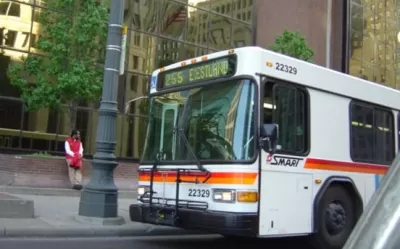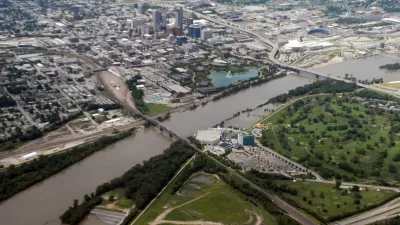Improved connectivity and reliability in the region's public transit could stimulate growth and help build a more vibrant local economy.

In a piece in Michigan Advance lamenting the "sorry state of public transportation in metro Detroit," Rick Haglund argues that the lack of regional connectivity in southeast Michigan is causing major economic damage to the area. "Amazon, for example, cited the lack of a regional transit system as one reason why it rejected Detroit in 2018 as a site for its $5 billion second headquarters, which might have brought thousands of six-figure salaried jobs to the area."
Widely regarded as one of the nation's worst public transit systems, Detroit relies on "two unconnected and inadequate bus systems" that serve more than 4 million residents. "Local metro Detroit leaders have been trying for more than 50 years to build a comprehensive transit system," but efforts have been stymied by opposition to new taxes.
But "[d]espite a lack of funding, there have been a variety of improvements to public transit in southeast Michigan," and the region "is expected to receive about $300 million from various COVID relief programs" that will backfill lost revenue. Ned Staebler, vice president for economic development at Wayne State University in Detroit and Washtenaw County representative on the Regional Transit Authority of Southeast Michigan (RTA) board of directors, "said the RTA will begin an extensive public engagement process this summer as part of an effort to create a new transit master plan." The agency has "hired GUD Marketing in Lansing to conduct a community engagement process, which will include involvement of a variety of business, citizen, nonprofit, political, faith-based and senior groups."
FULL STORY: Absence of viable regional transportation continues to hurt SE Michigan

Alabama: Trump Terminates Settlements for Black Communities Harmed By Raw Sewage
Trump deemed the landmark civil rights agreement “illegal DEI and environmental justice policy.”

Planetizen Federal Action Tracker
A weekly monitor of how Trump’s orders and actions are impacting planners and planning in America.

The 120 Year Old Tiny Home Villages That Sheltered San Francisco’s Earthquake Refugees
More than a century ago, San Francisco mobilized to house thousands of residents displaced by the 1906 earthquake. Could their strategy offer a model for the present?

BLM To Rescind Public Lands Rule
The change will downgrade conservation, once again putting federal land at risk for mining and other extractive uses.

Indy Neighborhood Group Builds Temporary Multi-Use Path
Community members, aided in part by funding from the city, repurposed a vehicle lane to create a protected bike and pedestrian path for the summer season.

Congestion Pricing Drops Holland Tunnel Delays by 65 Percent
New York City’s contentious tolling program has yielded improved traffic and roughly $100 million in revenue for the MTA.
Urban Design for Planners 1: Software Tools
This six-course series explores essential urban design concepts using open source software and equips planners with the tools they need to participate fully in the urban design process.
Planning for Universal Design
Learn the tools for implementing Universal Design in planning regulations.
Clanton & Associates, Inc.
Jessamine County Fiscal Court
Institute for Housing and Urban Development Studies (IHS)
City of Grandview
Harvard GSD Executive Education
Toledo-Lucas County Plan Commissions
Salt Lake City
NYU Wagner Graduate School of Public Service




























